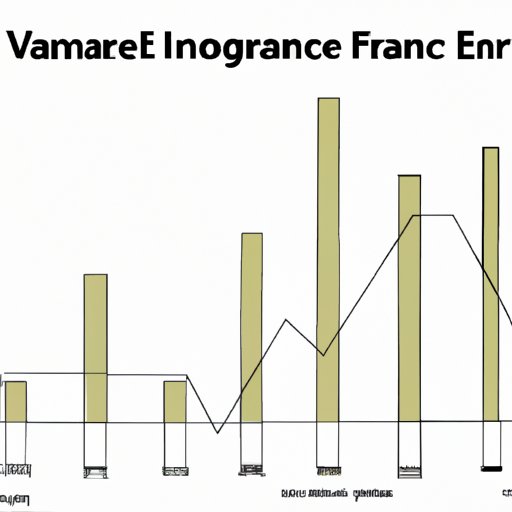Introduction
Variance in finance refers to the degree to which an asset’s return deviates from its expected value. It is an important concept to understand, as it affects risk management, investment returns, and volatility. In this article, we will explore the basics of variance, its role in risk management, its impact on investment returns, and how it interacts with volatility.

Exploring the Basics of Variance in Financial Markets
To begin, let’s take a look at what variance is and how it is measured. Variance is a measure of how much an asset’s return varies from its expected value. It is calculated by taking the difference between each return and the expected return, squaring it, and then taking the average of all the squares. The higher the variance, the more unpredictable the asset’s return is likely to be.
Knowing about variance is beneficial for investors because it can help them make better decisions about which assets to invest in. For example, if an investor is looking for low-risk investments, they may want to choose assets with lower variance. On the other hand, if an investor is looking for higher returns, they may want to choose assets with higher variance.

Understanding the Role of Variance in Risk Management
Risk management is the process of identifying, assessing, and controlling potential risks that could affect an organization or individual. Variance plays an important role in risk management because it helps investors determine the likelihood of an asset’s return being different than expected. By understanding the variance of an asset, investors can assess their risks and plan accordingly.
When it comes to managing variance, there are several strategies that investors can use. One strategy is diversification, which involves investing in a variety of assets with different levels of variance. This can help reduce overall portfolio risk by spreading out the risk across different assets. Another strategy is hedging, which involves offsetting one asset’s risk with another asset’s return. Investors can also use derivatives such as options and futures contracts to manage variance.

Analysing the Impact of Variance on Investment Returns
Variance can have a significant impact on an investor’s returns. Factors such as market conditions, the size of the investment, and the type of asset can all contribute to variance. Higher variance means greater potential for both gains and losses, so investors should be aware of the risks associated with higher variance assets.
Investors can use several strategies to manage variance and maximize returns. One strategy is to diversify their portfolios, as mentioned above. This can help reduce overall risk and increase potential returns. Another strategy is to focus on long-term investments rather than short-term ones. Long-term investments tend to be less volatile and therefore have lower variance.
Finally, investors can use financial instruments such as options and futures contracts to hedge against risk. By doing so, they can protect themselves from large losses and potentially generate higher returns.
Examining How Volatility and Variance Interact in Financial Markets
Volatility and variance are closely related. Volatility measures the magnitude of price movements over time, while variance measures the degree to which an asset’s return deviates from its expected value. As volatility increases, so does variance. High volatility and high variance mean that an asset’s return is more unpredictable and therefore carries more risk.
The relationship between volatility and variance can be used to manage risk in financial markets. By understanding the relationship between the two, investors can better predict the risk associated with an asset and plan accordingly. For example, if an investor is looking for low-risk investments, they may want to choose assets with lower volatility and variance.
Comparing Different Types of Variance in Financial Instruments
There are several different types of variance in financial instruments. The most common type is systematic variance, which measures the uncertainty surrounding the asset’s expected return. Unsystematic variance measures the uncertainty surrounding the asset’s actual return. Other types of variance include idiosyncratic variance, which measures the uncertainty surrounding the asset’s individual performance, and total variance, which is the sum of all three types of variance.
The type of variance that an asset has depends on several factors, including the asset’s underlying fundamentals, the market conditions, and the investor’s risk tolerance. Knowing the type of variance an asset has can help investors better assess the risk associated with investing in that asset.
Different types of variance can also have different impacts on financial instruments. Systematic variance tends to have the greatest impact on stock prices, while unsystematic variance tends to have the greatest impact on bonds. Idiosyncratic variance tends to have the greatest impact on mutual funds and other types of pooled investments.
Conclusion
In conclusion, variance in finance is an important concept to understand as it affects risk management, investment returns, and volatility. By understanding the basics of variance, its role in risk management, its impact on investment returns, and how it interacts with volatility, investors can make better decisions about which assets to invest in and how to manage risk.
(Note: Is this article not meeting your expectations? Do you have knowledge or insights to share? Unlock new opportunities and expand your reach by joining our authors team. Click Registration to join us and share your expertise with our readers.)
